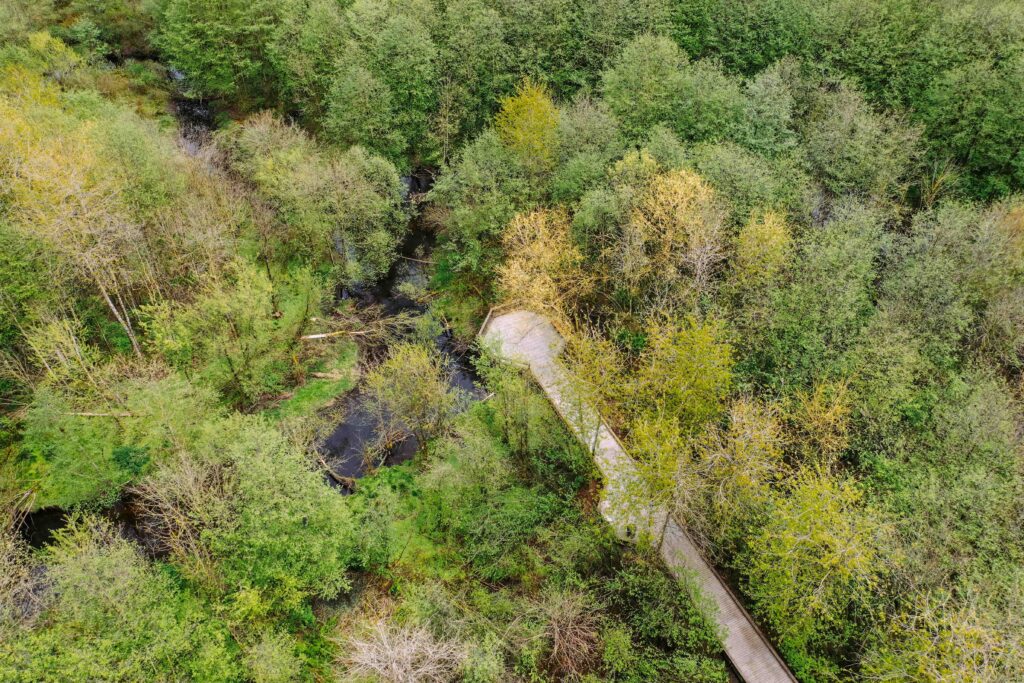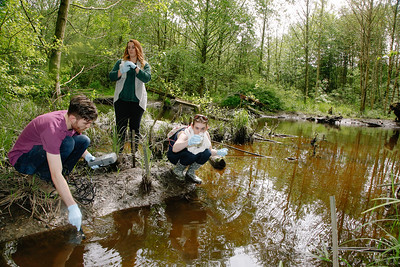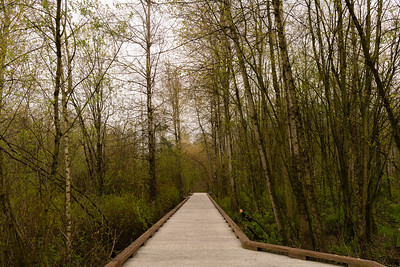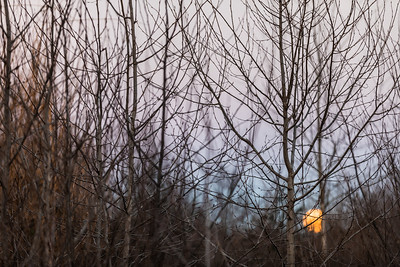Visit the Wetland
You’re Invited to Visit the Campus Wetland!
We welcome the general public to visit the Campus Wetland from the paved regional trail and boardwalk (see map) at any time. Any exploration or research off of the trail and boardwalk require a permit (learn how to gain Wetland Research and Exploration Access). Please contact uwbsust@uw.edu for questions.

How to Visit the Wetland
Take a walk or go for a ride!
The Campus Wetland may be easily observed from the paved trails and boardwalk. A regional bicycle/pedestrian trail follows the western and northern borders of the wetland. The central boardwalk provides an “in-the-wetland” experience with interpretive signs that guide you along the way to North Creek. This is a relaxing place to be surrounded by nature and recharge in the gap in your busy schedule. Please remember to be respectful to our natural environment by keeping noise to a minimum, not leaving trash, and not disturbing the plants or animals.
Schedule a tour!
We offer guided tours with our wetland staff, who are responsible for the daily operations and maintenance of the site. Tours may be scheduled by emailing uwbsust@uw.edu.
Visit the Wetland Virtually!
We now have a virtual wetland history and tour video so that you can enjoy the wetland from wherever you happen to be!
Students
Take a class!

Many classes have the unique opportunity to use the wetland as a living laboratory. There are numerous science classes that get you into the wetland, but involvement is not limited to just science. We have classes in arts, humanities, and education that also use the wetland in their classes.
Do a research project!
Interested in getting your hands dirty and gaining a better understanding of the wetland? Connect with a faculty member and do a research project in the wetland! Look for a professor whose background and research interests fit yours. Talk with professors about research ideas – either as an independent study, or contributing to their current research.
Instructors
Enhancing the Classroom Experience
The Campus Wetland is a wonderful natural resource to incorporate into classes. Getting students outside and interacting with the natural world inspires excitement and stewardship. A wide variety of classes, from science and art, to humanities and education have used the wetland to enrich their class experience. K-12 teachers also use the wetland to excite, educate and connect their students to the natural world.
Ideas for Class Involvement
- Bring your class for a walking tour or mindfulness walk on the paved trails and boardwalk
- Apply for a permit to take your class off the trails and deeper into the wetland — keep in mind, access to the wetland is regulated and requires permission, so plan ahead!
- Going off the trails? You must become knowledgeable about the site and where to go so you can lead the trip. We do not have staff to guide your visit. If this is your first time, we require that the group leader go through a field orientation prior to the group trip. You may indicate your need for this on your Wetland Research and Exploration Access application.
Responsibility in the Wetland

As group leader, it is your responsibility to be vigilant in:
- Making sure all wetland regulations are followed
- Looking after your students’ safety
- Ensuring that impacts to the wetland are minimized. Be sure to carry your permit with you at all times when exploring off the paths, and bring a first aid kid and cell phone with you in case of an emergency.
Borrow Equipment
Rubber boots are highly recommended for any activity in the wetland. If you don’t own boots, the Nest Gear Shop operated by the Outdoor Wellness Leaders offers outdoor equipment/gear rentals for all UW Bothell and Cascadia students. After your visit, be sure to clean and return any borrowed rubber boots. A boot wash station is located just outside of the Sarah Simonds Green Conservatory for your use.
Researchers
Scientific research is a vital activity in the wetland that allows us to understand its recovery and better manage the landscape. Lessons learned here have been applied to ecological restorations elsewhere. We encourage faculty and student research, as well as research by other scientists wishing to use the wetland for investigation. All research proposals are carefully scrutinized to ensure there are no substantial adverse impacts on the wetland. All research in the wetland must have an approved Wetland Research and Exploration permit.
Questions about the permit process may be directed to uwbsust@uw.edu.
Requirements
We allow research in the wetland that has minimal impacts to the site, and encourage observational studies. Experimental studies will be considered, but closely evaluated for potential impacts. We require that you:
- Read and follow the Wetland Access Regulations
- Read and abide by the information on this page
- Complete and attain approval for your Wetland Research and Exploration permit. Plan ahead — it can take up to 3 weeks for requests to be approved so be sure to allow enough time for the permit process!
If you are not familiar with the wetland, you may request a field orientation on your Wetland Research and Exploration request form.
Reporting Your Research
We require a research report to be submitted within 60 days of completion of your research project. This report should detail methodology, findings, and interpretations of results. Submit your report to the Sustainability office at uwbsust@uw.edu, or contact us if you need an extension on this reporting requirement. We also request that you inform us of any publications that result from research conducted in the Campus Wetland. All of this information is an enormous contribution to managing the wetland and obtaining funding for support of future research.

Examples of Previous Research Projects in the Wetland
- Behavior and diversity of bats
- Survey of terrestrial insects
- Stream macroinvertebrates as measures of stream health in North Creek
- Impacts of beaver activity on canopy development
- Impacts of tent caterpillar outbreaks on the pace and trajectory of ecological restoration
- Water quality of floodplain depressions through time and space, and links to water quality in North Creek
